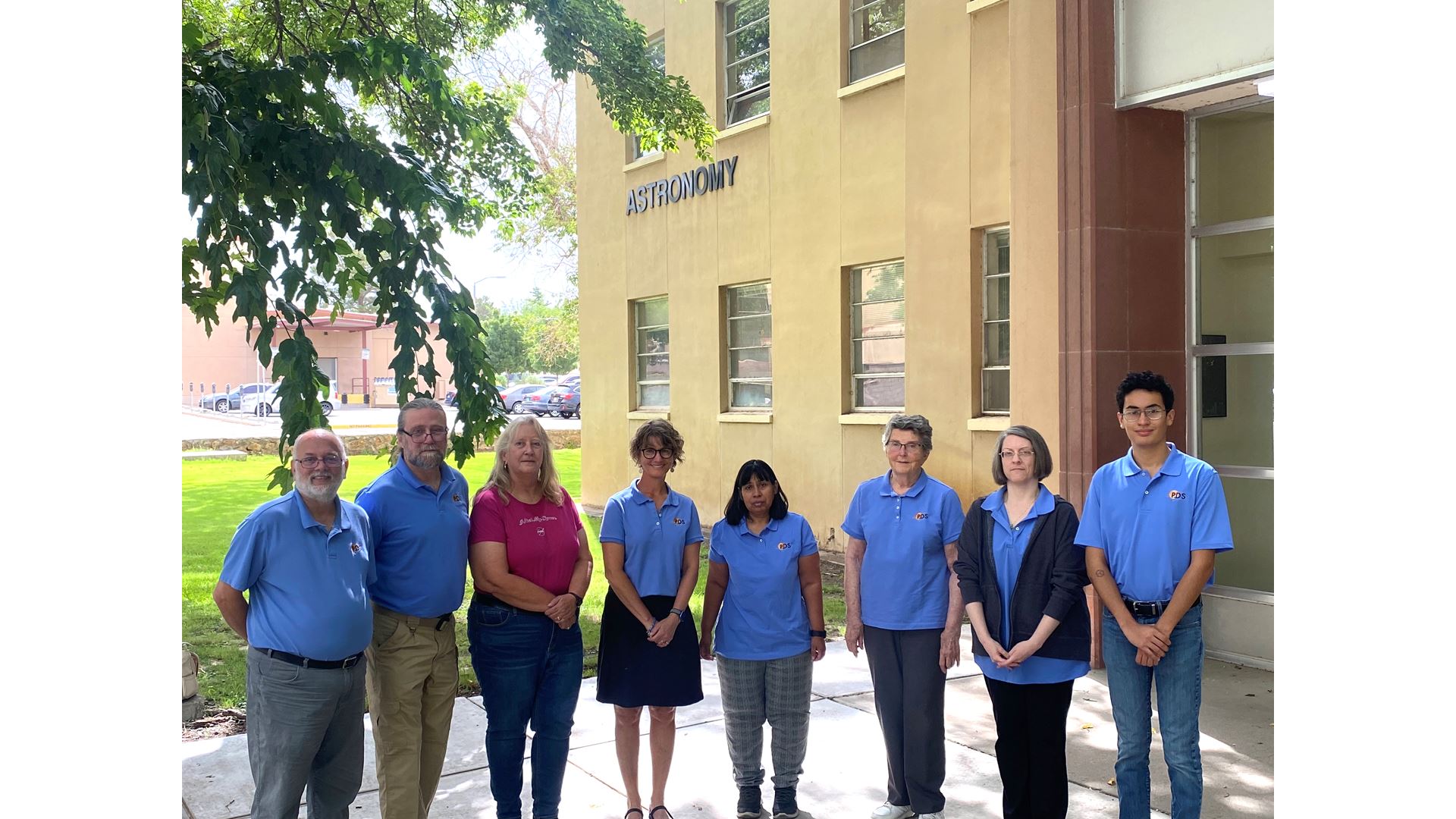The New Mexico State University Department of Astronomy is home to the Atmospheres Node of NASA’s Planetary Data System (PDS), a distributed archive that contains all data returned to Earth by NASA’s planetary missions throughout the solar system. At NMSU, a team has been archiving all data related to planetary atmospheres since 1995.
At an award ceremony in April, the NMSU team was among those in PDS nodes across the country to received NASA’s 2022 Silver Group Achievement Award at a ceremony. The award is one of the highest that teams of civil servants and contractors can receive.
Astronomy Professor Reta Beebe led the node at NMSU from 1995-2015. Beebe is still on the team working part time. Nancy Chanover has been the principal investigator of the Atmospheres Node since 2016. In addition to Chanover and Beebe, other current and former members of the team who received certificates include Lyle Huber, Lynn Neakrase, Joni Johnson, Irma Trejo and Tina Gueth.
The NASA Silver Service Award recognizes more than a decade of work on modernizing the PDS using new computing technology. The team’s efforts to move the data over to a new, more modern information model required a sustained effort.
“This Silver Team Award is for not just the people working at the PDS Atmospheres Node today, but for everyone who has been involved in the development of modern standards for the PDS, some of whom have retired or are no longer working for PDS,” Chanover said.
The main job of the Atmospheres Node as part of the PDS is to receive the data, to serve the data to the public, to make sure it's accessible and to provide expertise to the public or the user community who may have difficulty finding something. Their last task is sending the data to NASA’s deep archive for long-term preservation.
“The data continues to be used by junior researchers, students and very established senior researchers from all over the world,” Chanover said. “The data are, in many cases, so rich that even though a mission might have taken place 20, 30 or 40 years ago, people are still analyzing them and making new discoveries. For example, just recently there was a paper that made use of the Voyager observations of Jupiter, which would've been in the 1970s. So, they're still learning new information about Jupiter by going back to those Voyager data and doing a new kind of analysis in some cases.”
The PDS Atmospheres Node has a $5.1 million grant, which was recently renewed.
-30-

